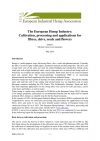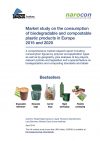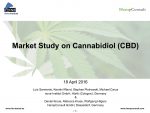Showing 261–280 of 423
-
Handlungsempfehlungen für die Durchführung von Ökobilanzen für die stoffliche Nutzung von Biomasse im Spannungsfeld der Politik – Schwerpunkt: Wirkungskategorie Klimawandel − Langfassung
Sustainability & Health
16 Pages
165 Downloads
165 Downloads
2017-01
FREE
165
Downloads -
2017-01
100 € – 500 €Price range: 100 € through 500 € ex. tax
Plus 19% MwSt.Press
release Select
licenceIncrease on Asian production capacities for bio-based chemicals, building blocks and polymers
New nova trend report “Asian markets for bio-based chemical building blocks and polymers” shows latest data and development in China, Japan, Malaysia, South Korea, Taiwan and Thailand. A global capacity of 2.4 million tonnes bio-based polymers was established in 2016, from which more than 45% of the most important bio-based polymers are produced in Asia.
-
Bio-based economy and climate change − Full version
Policy, Sustainability & Health
19 Pages
3644 Downloads
3644 Downloads
2017-01
FREE
3644
Downloads -
Asian markets for bio-based chemical building blocks and polymers − Short version
Markets & Economy
5 Pages
1590 Downloads
1590 Downloads
2017-01
FREE
1590
Downloads -
Are there GreenPremium prices for bio-based plastics? − Article in bioplastics MAGAZINE
Markets & Economy
2 Pages
1419 Downloads
1419 Downloads
2016-12
FREE
1419
Downloads -
The EU Ecolabel and bio-based products − Article in bioplastics MAGAZINE
Policy
3 Pages
403 Downloads
403 Downloads
2016-12
FREE
403
Downloads -
Biobased Polybutylene Succinate (PBS) – An attractive polymer for biopolymer compounds − Full version
Technology
12 Pages
1577 Downloads
1577 Downloads
2016-10
FREE
1577
Downloads -
789 Downloads
2016-10
FREE
789
Downloads -
“InnProBio project: Informative factsheets about the most pressing issues” − Factsheet 1: What are bio-based products?
Markets & Economy, Policy, Sustainability & Health
2 Pages
2042 Downloads
2042 Downloads
2016-08
FREE
2042
Downloads -
“InnProBio project: Informative factsheets about the most pressing issues” − Factsheet 2: Sustainability of bio-based products
Markets & Economy, Policy, Sustainability & Health
4 Pages
1664 Downloads
1664 Downloads
2016-08
FREE
1664
Downloads -
“InnProBio project: Informative factsheets about the most pressing issues” − Factsheet 3: Biodegradability – exposing some of the myths and facts
Markets & Economy, Policy, Sustainability & Health
5 Pages
1594 Downloads
1594 Downloads
2016-08
FREE
1594
Downloads -
13th International Conference of the European Industrial Hemp Association 2016 − Proceedings
Markets & Economy
17 Downloads
17 Downloads
2016-06
FREE
17
Downloads -
13 Downloads
2016-06
FREE
13
Downloads -
5th Conference on CO2-based Fuels, Chemistry and Polymers 2016 Proceedings
Markets & Economy
66 Downloads
66 Downloads
2016-06
FREE
66
Downloads -
Sustainable biomass supply and demand: a scenario analysis
Sustainability & Health
11 Pages
987 Downloads
987 Downloads
2016-05
FREE
987
Downloads -
The European Hemp Industry: Cultivation, processing and applications for fibres, shivs, seeds and flowers − Full version (Update)
Markets & Economy
9 Pages
162 Downloads
162 Downloads
2016-05
FREE
162
Downloads -
DPDSi Report “Wood-Plastic Composites – Global Overview 2015-2019” − Preview
Markets & Economy
5 Pages
487 Downloads
487 Downloads
2016-05
FREE
487
Downloads -
9th International Conference on Bio-based Materials − Presentation Christian Patermann
Markets & Economy
607 Downloads
607 Downloads
2016-04
FREE
607
Downloads -
Market study on “Consumption of biodegradable and compostable plastic products in Europe − Short version
Markets & Economy
6 Pages
4200 Downloads
4200 Downloads
2016-04
FREE
4200
Downloads -
92 Downloads
2016-04
FREE
92
Downloads



![Asian markets for bio-based chemical building blocks and polymers [Digital]](https://renewable-carbon.eu/publications/wp-content/uploads/2020/08/17-01-Asian-bio-based-polymer-markets-100x141.jpg)
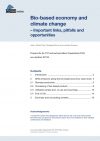
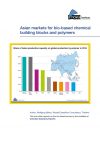
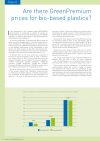
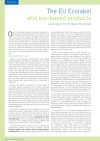

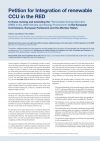
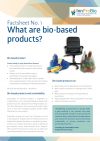
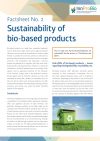
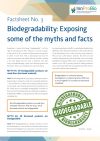
![13th International Conference of the European Industrial Hemp Association 2016 − Proceedings [Digital]](https://renewable-carbon.eu/publications/wp-content/uploads/2020/05/21-01-07_RC-Publications-Cover-Proceedings_EIHA-100x141.png)
![Proceedings 9th Conference on Bio-based Materials 2016 [Digital]](https://renewable-carbon.eu/publications/wp-content/uploads/2020/05/21-01-07_RC-Publications-Cover-Proceedings_Bio-based-Materials-100x141.png)
![5th Conference on CO2-based Fuels, Chemistry and Polymers 2016 Proceedings [Digital]](https://renewable-carbon.eu/publications/wp-content/uploads/2020/05/21-01-07_RC-Publications-Cover-Proceedings_CO2-based-100x141.png)

